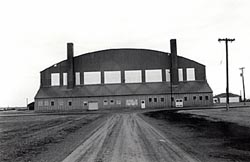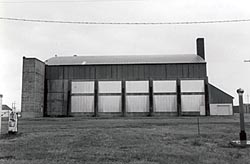
The Lewistown Satellite Airfield was constructed in Lewiston, Montana, during World War II as one of four training facilities for B-17 Flying Fortress crew members and included a storage site for the top secret Norden Bombsight. The Norden Bombsight, a synchronous stabilized bomb-aiming device, was considered fundamental in America's precision bombing doctrine. The extant bombsight storage shelter which housed the bombsight is one of a few known buildings of this type remaining in the United States. With construction complete by 1942, Lewistown was built as a satellite field for Great Falls Air Base. Squadrons were trained in the navigation of the B-17 in addition to receiving gunnery and bombing practice. Once their training was complete, the men were sent to the European front. The airfield was in operation during a 12-month period between 1942 and 1943 and thereafter deactivated.

The historic district retains all original buildings within its boundaries, with the exception of a guard house previously located southeast of the bombsight storage building. The Norden Bombsight was stored in a small one-story building constructed of poured concrete. Divided into two vaults, the Norden device was only accessible through bank vault doors. Other extant buildings include a hangar, the operations building, an armament building and an underground storage vault. The field was declared surplus in 1944 and has served the local community as a municipal airport ever since.
Visit the National Park Service Travel American Aviation to learn more about Aviation related Historic Sites.
Last updated: August 29, 2017
